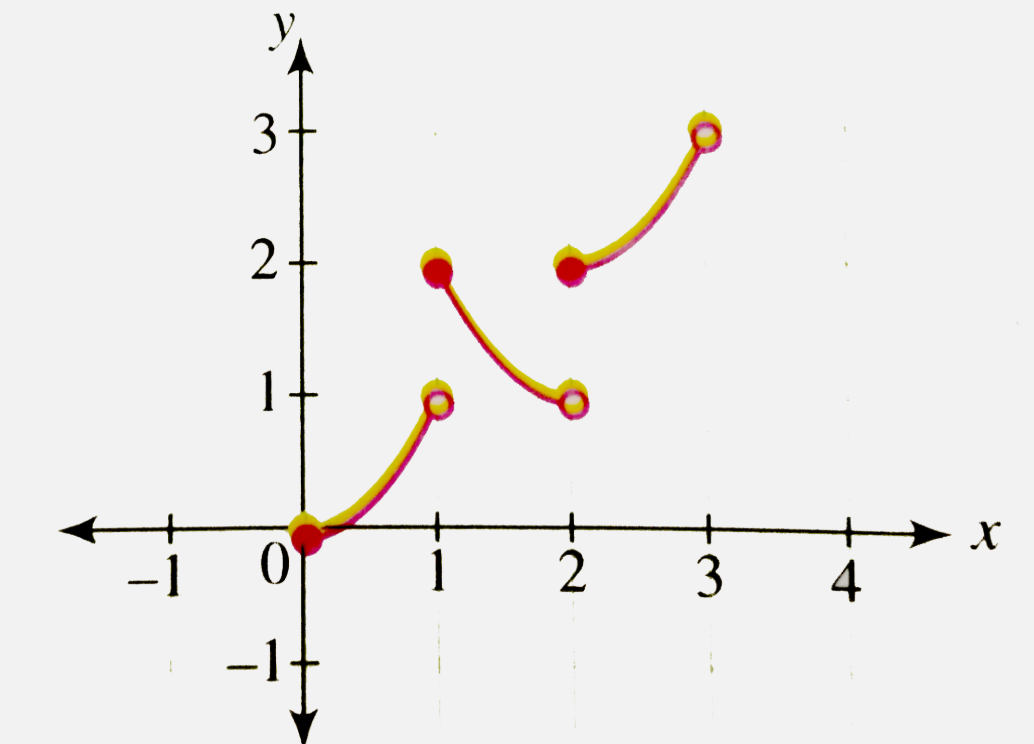Let f:R→R be defined as f(x)=2x3+7x−5 and g(x)=f−1(x). If g′(4)=ab where a and b are relatively prime positive integers then (a+b) is equal toSolution in Tamil
The correct Answer is:14
Step by step video & image solution for Let f: R rarr R be defined as f(x)=2 x^3+7 x-5 and g(x)=f^-1(x). If g^prime(4)=a/b where a and b are relatively prime positive integers then (a+b) is equal to by Maths experts to help you in doubts & scoring excellent marks in Class 12 exams.
Updated on:21/07/2023Topper's Solved these Questions
- FUNCTIONSBOOK - CENGAGECHAPTER - FUNCTIONSEXERCISE - Comprehension Type
7 Videos
- EQUATION OF PLANE AND ITS APPLICATIONS -IIBOOK - CENGAGECHAPTER - EQUATION OF PLANE AND ITS APPLICATIONS -IIEXERCISE - DPP 3.4
18 Videos
- GETTING STARTED WITH GRAPHSBOOK - CENGAGECHAPTER - GETTING STARTED WITH GRAPHSEXERCISE - Exercise
18 Videos
Similar Questions
Let f(x)=x2−2x−1∀x∈R Let f:(−∞,a]→[b,∞), where a is the largest real number for which f(x) is bijective. If f:R→R , g(x)=f(x)+3x−1 , then the least value of function y=g(|x|) is
View SolutionLet A(0,6,6), B(6,6,0) and C(6,0,6) are three points and point D is moving on the line x+z−3=0=y. If G is centroid of ΔABC, then minimum value of GD is
View SolutionDoes the following graph pass the vertical or horizontal line test ?

View SolutionLet f:[-(1)/(2),2]rarr R and g:[-(1)/(2),2]rarr R be functions defined by f(x)=[x^(2)-3] and g(x)=|x|f(x)+|4x-7|f(x), where [y] denotes the greatest integer less than or equal to y for y in R. Then,
View SolutionSuppose that f(x) is differentiable invertible function f′(x)≠0andh′(x)=f(x). Given that f(1)=f′(1)=1,h(1)=0 and g(x) is inverse of f(x) . Let G(x)=x2g(x)−xh(g(x))∀x∈R. Which of the following is/are correct? G′(1)=2 b. G′(1)=3 c.G1=2 d. G1=3
View SolutionLet the function f;R-{-b}rarr R-{1} be defined by f(x)=(x+a)/(x+b),a!=b, then
View SolutionLet f:R→R defined by f(x)=x3+3x+1 and g is the inverse of 'f' then the value of g'(5) is equal to
View SolutionIf f(a)=2,f′(a)=1,g(a)=−1,g′(a)=2, then the value of limx→ag(x)f(a)−g(a)f(x)x−a is (a)−5 (b) 15 (c) 5 (d) none of these
View SolutionSuppose fand g are functions having second derivative f'' and g'' everywhere. If f(x).g(x)=1 for all x and f′ and g' are never zero, then f''(x)f′(x)−g''(x)g′(x) is equal (a)−2f′(x)f (b) 2g′(x)g(x) (c)−f′(x)f(x) (d) 2f′(x)f(x)
View SolutionSuppose that f(x) is differentiable invertible function f′(x)≠0andh′(x)=f(x). Given that f(1)=f′(1)=1,h(1)=0 and g(x) is inverse of f(x) . Let G(x)=x2g(x)−xh(g(x))∀x∈R. Which of the following is/are correct? G′(1)=2 b. G′(1)=3 c.G1=2 d. G1=3
View SolutionLet f:R−{2}→R be defined as f(x) = x2−4x−2 and g:R→R be defined by g(x) = x + 2. Find whether f = g or not.
View SolutionShow that if f:R−{75}→R−{35} is defined by f(x)=3x+45x−7andg:R−{35}→R−{75} is defined by g(x)=7x+45x−3 , then fog =IAandgof=IB, where A=R−{35},B=R−{75},IA(x)=x,∀x∈A,IB(x)=x,∀x∈B are called identity functions on sets A and B , respectively .
View SolutionLet A=R-{3}, B=R-{1} and f:A→B defined by f(x)=x−2x−3. Is 'f' bijective ? Give reason.
View SolutionLet f:R→R be defined as f(x)=2x3+7x−5 and g(x)=f−1(x). If g′(4)=ab where a and b are relatively prime positive integers then (a+b) is equal to
View SolutionLet f:[−12,2]→R and g:[−12,2]→R be functions defined by f(x)=[x2−3] and g(x)=|x|f(x)+|4x−7|f(x), where [y] denotes the greatest integer less than or equal to y for y∈R. Then,
View Solution
